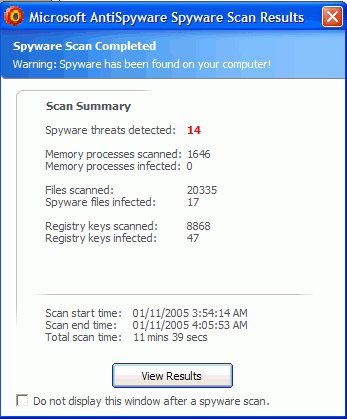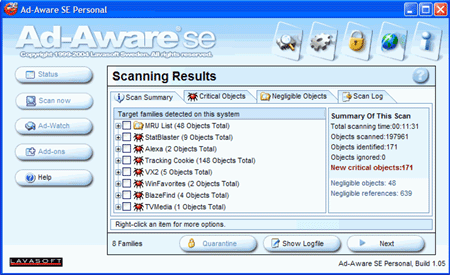This Windows XP-based 1.3GHz AMD home office system had gone for a while since it was
last checked for spyware. A full system scan by both Ad-Aware and the Microsoft
Windows AntiSpyware (beta) software determined that yes, there was a considerable menagerie
of spyware onboard.

Note that three of the detected threats that the Microsoft Windows AntiSpyware (beta) software picked up
were inconsequential, two of them being peer-to-peer programs known to bundle
adware, and the third being a remote admin program that we had knowingly
installed. In these cases, we were pleased to see that Microsoft's new
program placed a default 'ignore' order on the three entries so that we did not
accidentally delete useful software.
Interestingly in this case, while Ad-Aware picked up less 'families' of spyware than
theMicrosoft Windows AntiSpyware (beta) software, it seemed to find more infected files in
several of the cases. For example, with the 'statblaster' adware program,
Microsoft's software identified a single file while Ad-Aware picked up ten
assorted files and registry entries. Also, unlike our previous test on the
Intel laptop, there was very little overlap in the results here, as each program
seemed to find a different list of nasties. We aren't sure what to make
of this.
In the next test we decided to run things the opposite way on this second test system,
putting the Microsoft anti-spyware beta through its paces first, then letting
Ad-Aware run a second scan for remaining nasties. Here's the result.

Not so good for our new Microsoft product here. As you can see, there
are several leftover spyware and adware programs, including the remaining
'statblaster' files and registry entries that the Microsoft anti-spyware beta
failed to pick up the first time around. This kind of inconsistency in
scanning results can lead to persistent spyware and adware infestations and a
poorly performing system.
